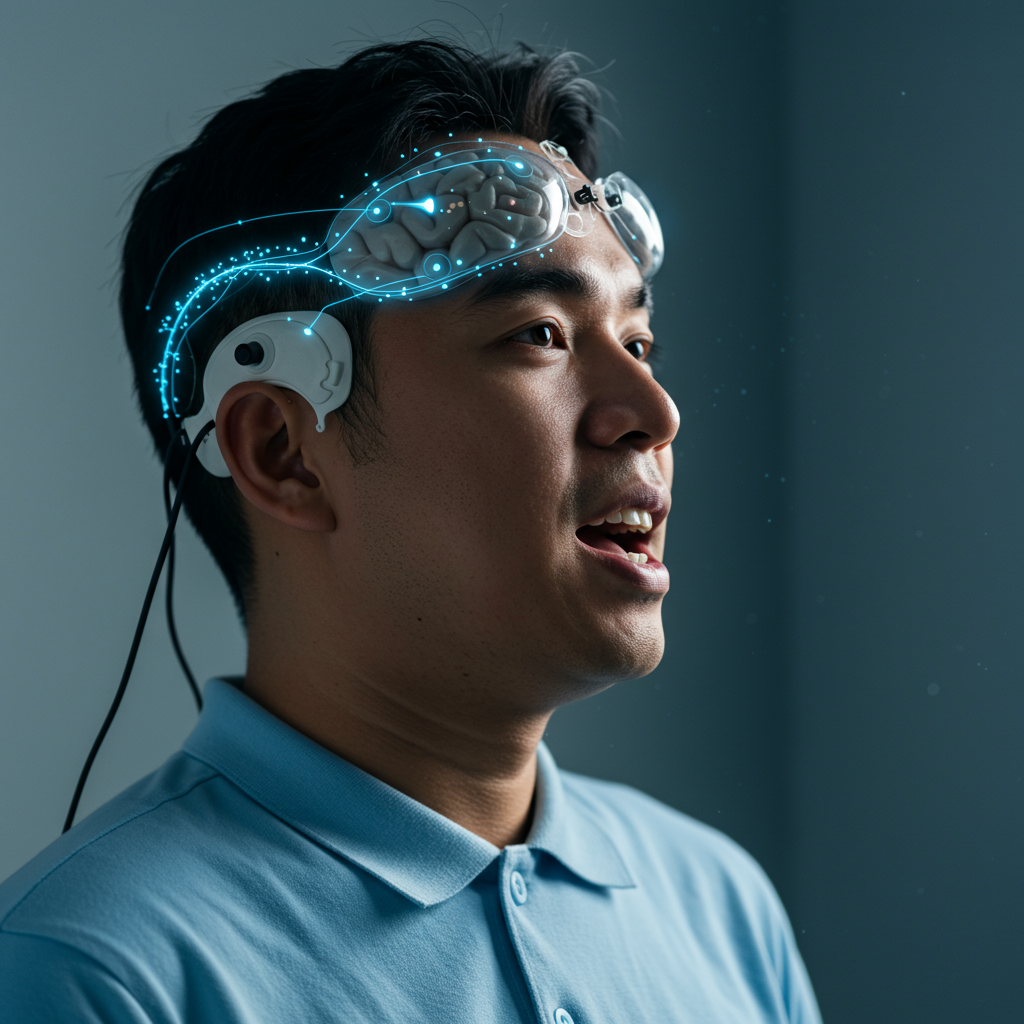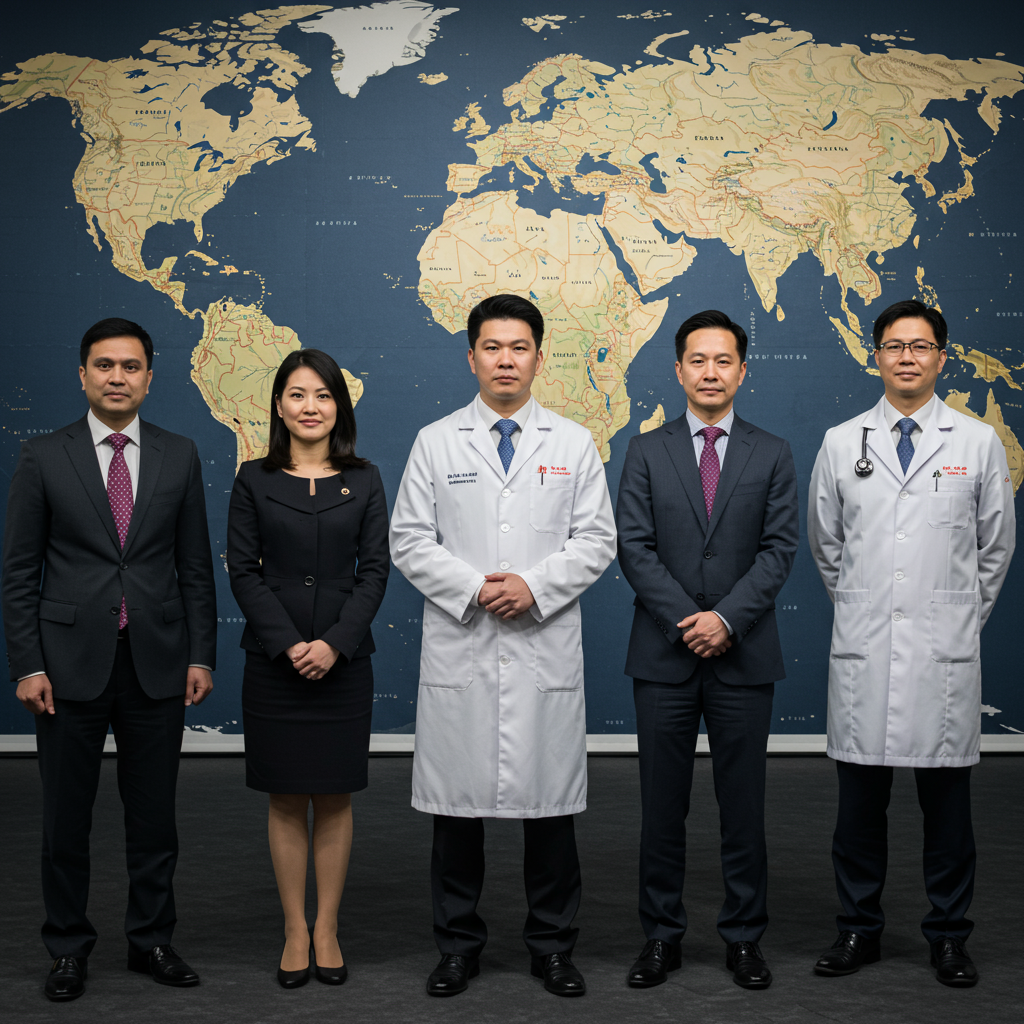Losing the ability to speak is devastating; it strips away a fundamental part of identity and makes simple communication a monumental challenge. For individuals living with severe paralysis or neurological conditions like ALS, reconnecting with loved ones and the world often relies on slow, limited methods. But now, groundbreaking research is offering a new pathway to natural, real-time conversation. Scientists have developed an innovative brain-computer interface (BCI) system that has enabled a paralyzed man to speak, express vocal nuances, and even sing, directly from his thoughts. This development represents a significant leap forward in restoring voice and human connection.
Restoring Voice Through Neural Signals
Developed by a dedicated team at the University of California, Davis, this advanced BCI doesn’t simply translate brain activity into text on a screen. Instead, it directly decodes the intricate neural signals that would normally orchestrate the physical muscles used for speech. Think of it as capturing the brain’s intent to speak before it reaches the silenced vocal apparatus. This method allows for a much more direct and instantaneous form of communication.
The core of this powerful system lies in a surgical implant. Four microelectrode arrays, totaling 256 electrodes, were placed in the left precentral gyrus. This specific brain region is precisely where the brain initiates motor commands for speech. These tiny electrodes vigilantly monitor the complex electrical patterns generated as the user attempts to form words and sounds.
AI Decodes Thought into Sound
Once captured, the raw neural data is instantly fed into a sophisticated AI decoding model. This model has been rigorously trained to recognize and interpret the firing patterns from hundreds of neurons. It learns to map these specific brain signals to corresponding speech sounds. The AI’s ability to translate these neural patterns into audible speech is remarkably fast. Research indicates this process occurs with minimal latency, reported as quickly as 10 milliseconds or within 25 milliseconds by different sources. This near-instantaneous translation is crucial. It allows for fluid, back-and-forth conversation, a stark contrast to the frustrating delays common in earlier communication technologies.
More Than Words: Voice Cloning and Expression
One of the most striking features of this BCI system is its capacity to reproduce the user’s unique voice. A voice cloning algorithm was integrated into the system. This algorithm was trained using audio recordings made of the participant before the onset of his ALS symptoms. The result is deeply personal: the synthesized speech sounds authentically like the individual user, not a generic, robotic computer voice. This personalization adds a critical layer to restoring not just communication, but identity.
Beyond basic word delivery, the technology captures subtle but vital elements of human expression. The AI is trained to identify nuances in neural activity corresponding to specific vocal intentions. This includes recognizing when the user intends to ask a question versus making a statement. It can also detect and apply emphasis to particular words, changing the meaning or feeling of a sentence. Furthermore, the system handles non-vocabulary sounds like interjections (“aah,” “ooh,” “hmm”), making the resulting speech sound far more natural and human.
Enabling the User to Sing
Perhaps one of the most groundbreaking aspects demonstrated by this BCI is the ability to facilitate musical expression. The system successfully recognized when the participant was trying to sing. It could identify specific pitches he attempted to vocalize. While described as simple melodies, the system modulated the synthesized voice accordingly. This capability moves beyond purely functional communication and opens up possibilities for more profound forms of expression and connection, demonstrating the system’s flexibility.
The Impact on Daily Life
The real-world impact of this technology for someone living with paralysis is profound. The ability to communicate in near real-time, using one’s own voice, is truly transformative. Researchers emphasize that this speed is key to conversational inclusion. Users can interrupt, respond quickly, and participate actively in group discussions, rather than being passive observers waiting for their slow typed messages to catch up.
As one neurosurgeon involved in the study noted, the human voice is intrinsically linked to identity. Losing it is devastating. This BCI offers tangible hope for regaining that essential part of self. The participant in the UC Davis study reported feeling “happy” using the system and felt it sounded like “his real voice.” This powerful feedback underscores the emotional and psychological benefit of restoring such a vital function. The researchers noted the participant has been able to continue working full-time, engaging in meaningful conversations that were previously impossible.
Study Performance and Future Steps
The research published in the prestigious journal Nature detailed the system’s performance. In trials, listeners could understand nearly 60 percent of the synthesized words. This represents a dramatic improvement compared to the roughly four percent understanding rate observed without the BCI assistance. The system also demonstrated flexibility by successfully handling new, made-up words not included in its initial training data. One report indicated the potential for a 125,000-word vocabulary with just two training sessions. While the accuracy still requires refinement compared to some slower text-based systems, the priority here is the speed and naturalness of voice output.
Despite these highly promising early results, the researchers emphasize that the technology is still in its developmental phases. A critical limitation is that the system has, so far, only been tested with a single participant. More extensive studies are necessary to evaluate its effectiveness across a wider range of individuals. This includes people with speech loss caused by different conditions, such as stroke or other neurodegenerative diseases. The BrainGate2 clinical trial at UC Davis Health is actively continuing to enroll participants to further refine and rigorously test the system’s capabilities and reliability.
Experts in the field are hailing this development as a potential “holy grail” for speech BCIs, characterizing it as achieving “real, spontaneous, continuous speech.” The team believes the AI’s training on sound patterns, rather than specific language vocabularies, might make it adaptable to other languages, potentially including tonal languages like Chinese. Future efforts will likely focus on enhancing clarity, increasing the number of electrodes for finer control, and expanding testing to diverse populations.
Frequently Asked Questions
What is this new BCI technology and how does it work?
This BCI is a brain-computer interface developed at UC Davis. It works by surgically implanting 256 electrodes into the left precentral gyrus (the brain area controlling speech muscles). These electrodes capture the neural signals generated when a person attempts to speak. An AI model then decodes these signals in near real-time (within 10-25 milliseconds) and synthesizes them into audible, personalized speech and vocalizations, including intonation and singing.
Where was this brain-computer interface research conducted?
The research was conducted by a team at the University of California, Davis (UC Davis). The study involved a participant enrolled in the ongoing BrainGate2 clinical trial at UC Davis Health. The groundbreaking findings detailing the system’s capabilities, including enabling speech and singing from brain signals, were published in the scientific journal Nature.
What does this mean for people with ALS or other conditions causing speech loss?
This BCI technology offers significant hope for restoring natural, real-time communication. By translating brain signals into personalized voice, it allows individuals who have lost the ability to speak due to conditions like ALS or stroke to participate more fully in conversations, express nuances, and potentially even vocalize non-verbal sounds or simple melodies. While still in early stages and tested on one person, it’s a major step towards regaining a fundamental part of identity and connection.
A New Horizon for Communication
The ability to translate thought directly into audible, personal speech is a monumental achievement in assistive technology. The UC Davis team’s work with this BCI system is not just a technical success; it’s a profound step towards restoring dignity, connection, and self-expression for people silenced by neurological conditions. While challenges remain and more research is needed to expand its use, the initial results paint a clear picture of a future where losing your voice doesn’t mean losing your ability to connect with the world in a truly human way. The potential for this technology to transform lives is immense, offering a powerful new voice to those who need it most.




